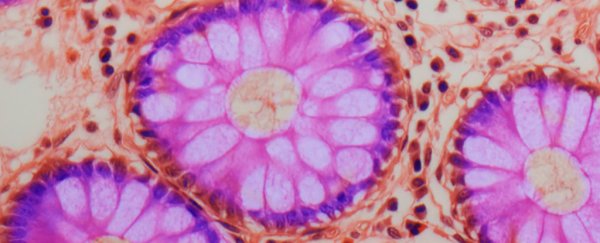In a massive collaborative effort, researchers have compiled the most complete healthy human cell atlas yet, mapping the positions of more than a million cells across 33 different organs.
This incredible feat forms a comprehensive reference to help us better understand human health, diseases, treatments, and vaccines, with the aim to map every cell type in the human body as part of the international Human Cell Atlas.
"You can think of it as a Google Maps of the human body," Wellcome Sanger Institute cellular geneticist Sarah Teichmann said during a press conference.
"It's really that street maps view of the individual cells and where they sit in tissues that we're aiming towards."
Four studies, involving over 2,300 researchers across 83 countries, harnessed improved laboratory technologies and advances in machine learning to map, compare, and dig deeper into life's basic building block: the cell.
New algorithms were pivotal in helping them to pry out important molecular patterns among the messy biological noise.
"People often think of the genome as the blueprint of the organism, but that's not really correct. The genome is more of a parts list, because every cell type uses a different set of parts," explained Stanford bioengineer Steve Quake during the press conference.
"What we've been able to do collectively here is help understand and interpret how different parts of the genome are used to define different cell types and create molecular definitions for all the different cell types we've studied collectively in these papers."
The huge datasets, compiled thanks to the generosity of tissue donors, will allow us to draw connections between these cells for a more complete, whole-body perspective of our biological processes and the disruptions that lead to diseases.
For example, "we can have genetic variants in our DNA that are shared by all cells in the body, and yet the disease itself will only manifest in certain tissues, in certain organs, and that will happen based on the genes that the cells actually use," notes MIT computational biologist Aviv Regev.
Her study, led by MIT computational biologist Gökcen Eraslan, developed experimental processes to accurately profile more cell types than ever before, to help compile and also search through the atlas.
"In our study, we've shown that this approach can generate crucial insights about the role of cells and tissues in many diseases, which will spark new scientific and biomedical inquiries aimed at a shared goal of revolutionizing medicine," said Regev.
The healthy cell atlas has already revealed new cell types, patterns in cell communications, tissue specific cell features, microbiome patterns, cell states important to disease, and lots more.
The researchers complemented their findings with experiments, such as tests of signaling molecules in organoids to confirm their discoveries.
One of the datasets, called Tabula Sapiens, contains the molecular profiles of 400 different cell types (each type imaged and annotated by experts), obtained from single-cell RNA sequencing of nearly half a million living cells.
It uncovered how some cell types resemble each other no matter where in the body they're found, whereas other cell types are extremely different from one another in different tissues.
While researchers have already found many genes that lurk behind diseases, there's still much we don't know about the tissues and environments these genes manifest in. Cell mapping datasets allow researchers to identify these tissues and investigate which types of cells participate together to form a disease, providing more targets for treatments.
What's more, a healthy cell atlas can also reveal where else a targeted molecule for a treatment will be expressed in the body, allowing us to see if there will be toxicity, Regev explained.
"We also took the opportunity to look at, in the case of the intestines, the non-human cells that are there, the microbiome, as a function of location," said Quake.
"There's a really rich and complex structure to the species as you move through the intestines."
Our symbiotic microbes play a huge role in our health.
The new findings have been described in a collection of papers; a couple of teams zoomed in specifically on the immune system, looking for immune cell locations and how they mature from a developmental perspective.
Genomicist Chenqu Suo and team discovered a new type of immune cell that seems to be involved in recognizing self antigens. Teichmann suspects its role involves directing the immune system to be tolerant toward our own healthy tissues.
These are just a few examples of the exciting possible applications of a healthy cell atlas, and there will be even more to discover as experienced and new scientists continue to build on it.
"The Human Cell Atlas is very committed to include the variation of humans and not just a narrow view of them," said Regev. "But these are still early days."
"Variation will be the next generation of the Human Cell Atlas," added Teichmann.
These studies were all published in Science here, here, here, and here.
